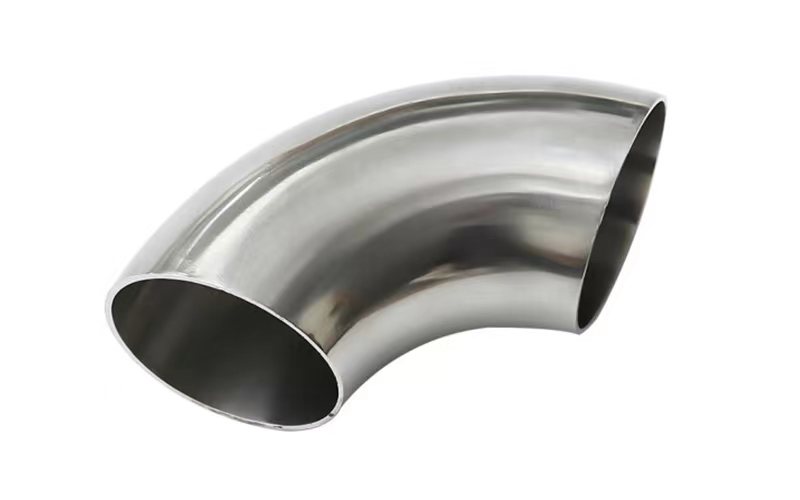What is a Stainless Steel Bend Pipe?
| Product Name | Stainless Steel Bend Pipe |
| Material | Stainless Steel 304, 304L, 316, 316L,ect. |
| Size | 1″-6″ DN10-150 |
| Thickness | 1.5-4MM |
| Working pressure | 2-6 Bar |
| Working Temperature | -10~120 Degree. |
| Polish | Mirror polish, dull/matte polish,sub-light,240 girt,400 grit |
| Connection | Welded, clamp, Male, with union |
| Standard | 3A, DIN, SMS, BS, RJT, CIP, IDF, DANSK, etc. |
| Main Product | Clamps, Tube Hangers, Ferrules, Unions, Fittings, Values, etc |
| Application | dairy, food, beer, beverage, pharmacy, cosmetic and so on |
| Special Design | we can produce according to your drawings |
| Packing | Shrink wrapped-carton-pallet or in seaworthy wooden cased |
| Shipping mode | By sea, by air, by express |
| Delivery time | Depends on quantities you need. |
| Sample Policy | buyer bear the air fee, but this fee will be reduced from order directly. |
Stainless steel bend pipes are tubes made of stainless steel, which are corrosion-resistant, high temperature-resistant and high-pressure-resistant. They are widely used in various industries for pipelines to transport liquids, gases and solids. Production methods include cold bending and hot bending to ensure the overall performance and strength of the bend pipes.
Implementation standard for Stainless Steel Bend Pipe
It should be noted that there may be other applicable standards or codes in each country or region. In a specific project, the appropriate implementation standard should be selected according to the regulatory and technical requirements of the location.
ASTM A403、ASTM A815、ASME B16.9、ASME B16.28
EN 10253-3、EN 10253-4、ect.
DIN 2605、DIN 2606、DIN 2609、ect.
BS 1965、BS EN 10253-3、ect.
JIS B2313、ect.
GB/T 12459、GB/T 13401、ect.
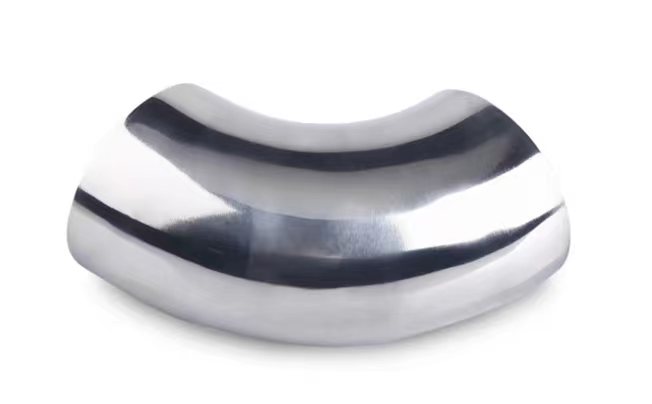
Stainless Steel Bend Pipe features
stainless steel bend pipe with its corrosion resistance, high strength, high temperature resistance and other characteristics, become an important part of the piping system, widely used in various industrial fields.
1.Corrosion resistance:stainless steel bend pipe is a corrosion-resistant stainless steel material, it can resist acid, alkali, salt and other chemicals, so it can work in a corrosive environment for a long time.
2.High strength:stainless steel bent pipe is a high-strength, high hardness, pressure resistance, load resistance, is an ideal pipe applied to high-pressure pipelines.
3.High temperature resistance:stainless steel bend pipe is suitable for use in higher temperature pipeline systems due to its good mechanical properties at higher temperatures, and is not prone to deformation, melting and other characteristics.
4.Good processing performance:stainless steel bend pipe manufacturing is simple, easy to install, according to special requirements for bending, cutting, jointing, suitable for different pipeline arrangements and design requirements.
5.Hygienic:stainless steel bend pipe, non-toxic, odourless, hygienic, in the food, pharmaceutical and other industries are widely used.
6.Reliable sealing:stainless steel pipe bends due to its excellent sealing, in order to ensure the safety of the pipeline under the premise of the pipeline can effectively prevent leakage, thereby increasing the safe and reliable operation of the pipeline.
7.Aesthetics:stainless steel bend pipe smooth appearance, modern, beautiful shape, suitable for decoration, furnishings, decorative pipelines.
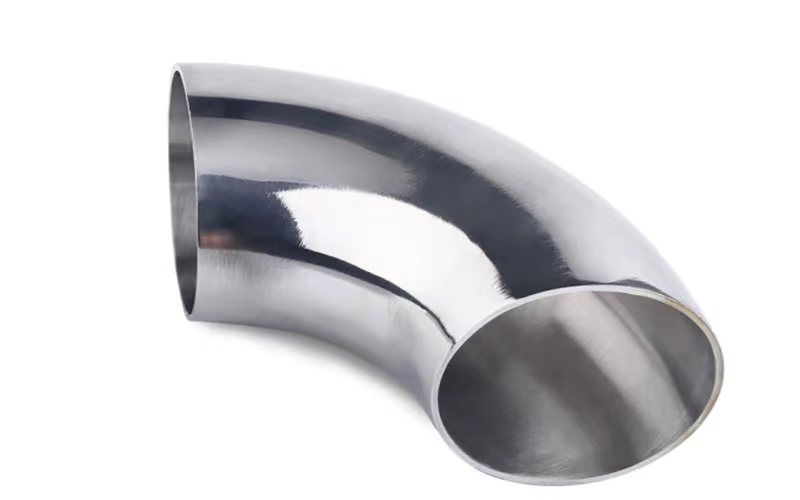
What are the uses of Stainless Steel Bend Pipe?
1.Stainless steel bend pipes have a wide range of uses in various industries due to their unique characteristics, including the following:
Industrial piping systems: Stainless steel bend pipes are often used for the transportation of liquid, gas, and solid materials in industrial pipelines.Applicable to the pipeline system of chemical, oil, food, medicine, etc.
2.Construction and decoration:Stainless steel bend pipe is widely used in building and decoration.It can be applied to indoor and outdoor piping, handrails, balustrades, staircase and other decorative pipe parts.
3.Automotive industry: Stainless steel bend pipes play an important role in automobile manufacturing.They are used in the exhaust system, the cooling system, the fuel supply system, and so on, to provide excellent corrosion resistance and high-temperature resistance.
4.Energy industry: Stainless steel bend pipes are widely used in the energy industry in the pipeline system of oil, gas, nuclear energy, etc., as well as in heat and nuclear power stations.
5.Marine engineering: The corrosion resistance and corrosion resistance of Stainless steel bend pipes have made them an essential component in marine engineering, such as offshore platforms, submarine pipelines, and offshore oil exploration.
6.Food and pharmaceutical industry: Because of its nontoxic, corrosion-resistant stainless steel, stainless steel is widely used in the pipeline system of food and medicine to guarantee the hygiene and quality of the product.
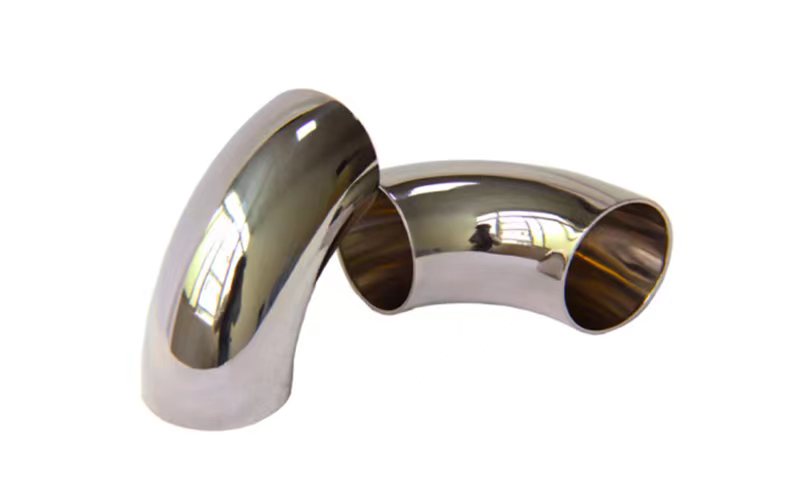
What are the types of Stainless Steel Bend Pipes?
Stainless steel bend pipes can be divided into various types according to their bending angles and shapes. Here are some common types of stainless steel bend pipes:
1.90-degree bends: This bend is bent at an angle of 90 degrees, often used to change the direction of the pipeline or connect two sections of pipe to form a right-angle turn.
2.45-degree bends: this bend is bent at an angle of 45 degrees, often used in piping systems that require a small angle turn.
3.180-degree bends: These bends are bent at an angle of 180 degrees to form a U-shaped or semi-circular pipeline, often used in cases where the pipeline needs to be self-looped or where the pipeline bypasses an obstacle.
4.Short Radius Bend: The bend radius of this bend is relatively small, usually 1.5 times the diameter of the pipe, suitable for limited space.
5.Long radius bends: the bend radius of this bend is relatively large, usually 3 times the diameter of the pipe or larger, for the need for a larger bend radius of the piping system.
6.Square Pipe Bend: This bend has a square cross-section shape and is suitable for piping systems that require a square cross-section.
7.Oval pipe bends: These bends have an oval cross-section and are often used for special piping design needs.
8.Multi-Elbow Bend: This type of bend has multiple elbows, allowing it to change the direction of the pipe multiple times, and is suitable for complex piping arrangements and applications with multiple turning points.
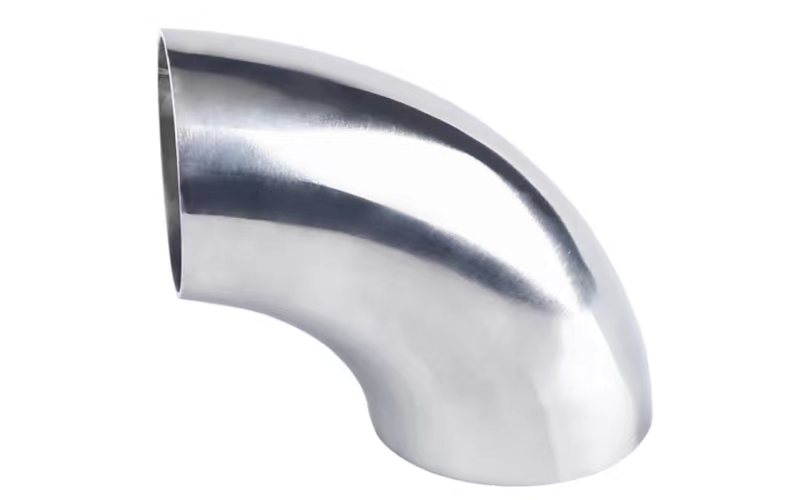
Manufacturing process of Stainless Steel Bend Pipe
The manufacturing process of stainless steel bends can be divided into two common methods: cold bending and hot bending.
Cold Bending: Cold bending is the bending of stainless steel tubes by mechanical force at room temperature. This method is suitable for smaller diameters and thinner wall thickness of the tube. Cold bending process includes the following steps:
a. Preparation of tubing: select the appropriate stainless steel bend pipe, according to the required bending radius and angle for cutting and processing.
b. Bending process: the pipe is put into the bending machine or bending mould, through mechanical force to make it bend into the required angle and shape.
c. Inspection and shaping: The stainless steel bend pipe is inspected to ensure that the bending quality and geometric dimensions meet the requirements. If necessary, shaping and adjustment.
Hot bending: hot bending is carried out by heating stainless steel bend pipe to a certain temperature range to make it soften and then bend. This method is suitable for large diameter and wall thickness of the pipe. The hot bending process includes the following steps:
a. Preparation of tubing: select suitable stainless steel bend pipe, and cut and prepare according to the required bending radius and angle.
b. Heating: the tube is heated to the appropriate temperature range, usually using methods such as induction heating or flame heating.
c. Bending and processing: After the stainless steel bend pipe has reached the proper temperature, it is bent to the desired angle and shape using a bending machine or a die.
d. Cooling and processing: The stainless steel bend pipe are cooled and possibly heat treated and subsequently processed to restore the mechanical properties and strength of the material.

The difference between Stainless Steel Bend Pipe and Carbon Steel Bend Pipe
1.Material: stainless steel bend pipes made of stainless steel containing iron, chromium, nickel, excellent corrosion resistance. The carbon steel pipe bends, is a carbon steel based on iron and carbon, does not have anti-corrosion properties.
2.Corrosion resistance: stainless steel bend pipe corrosion resistance, acid, alkali, salt and other chemical corrosion. However, carbon steel pipe bends in the high humidity, high moisture, high oxygen environment, very easy to rust.
3.Strength: stainless steel bend pipe has a relatively high strength, can withstand great pressure and load, suitable for use in high-pressure pipelines. The carbon steel pipe bend is widely used in ordinary industrial pipelines because of its low strength.
4.Applicable environment: stainless steel bend pipes because of its good corrosion resistance, high temperature resistance and other characteristics, is widely used in the pipe material has special requirements of the chemical industry, petroleum, food, medicine and other industries. carbon steel pipe bending is a commonly used pipe, mainly used in general industrial pipelines and construction sites.
5.Cost: Because the price of stainless steel bend pipe is higher than carbon bend steel pipe, so compared with carbon steel pipe, stainless steel bend pipe price is higher.
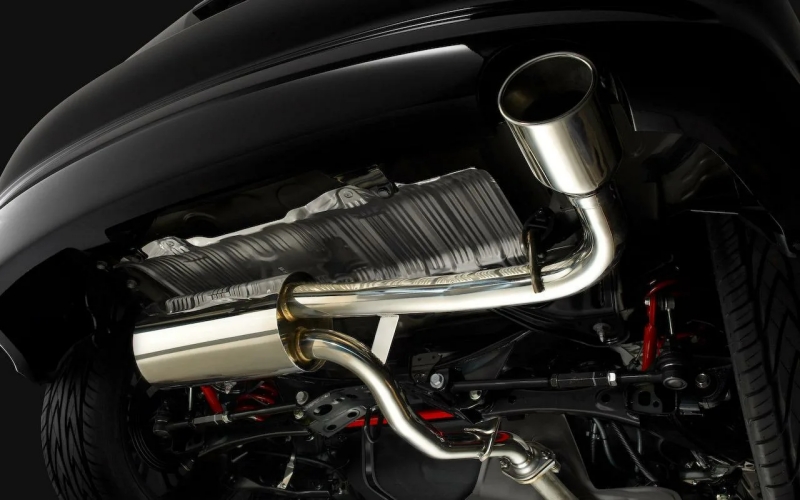
Precautions for the use of stainless steel bend pipes
1.Material selection: According to the specific engineering needs and environmental conditions, the selection of appropriate stainless steel materials. Commonly used stainless steel materials are 304, 316, 321 and so on, their corrosion resistance and mechanical properties vary.
2.Bending radius: to choose the appropriate bending radius, if the bending radius of the stainless steel elbow is too small, it will bring more stress and deformation to the pipe, thus affecting the strength and durability of the pipe. In order to ensure the quality of the elbow, the range of the elbow radius described in the standard should be observed.
3.Bending process: Select the appropriate processing method, and based on the outer diameter of the pipe, wall thickness and bending angle, the development of the appropriate cold or hot bending process. Ensure that the production process of the elbow to meet the relevant standards to ensure product quality and performance.
4.Quality inspection: the appearance of stainless steel pipe, size, material and so on. Ensure that the elbow has no cracks, breaks or other defects to meet the relevant standards.
5.Installation and use of the environment: please pay attention to the installation method and use of the environment. Do not distort or overload the bent pipe under the action of external force, otherwise it will reduce the working performance and service life of the pipe. In some specific working conditions, such as high temperature, high pressure, corrosion, etc., must choose the appropriate material and use the appropriate production process.
6.Maintenance and repair: should always do a good job of routine maintenance of the elbow, remove the dust on the elbow to prevent corrosion and clogging of the elbow. If necessary, the elbow for periodic testing to ensure that the elbow works safely and properly.

